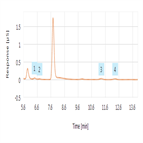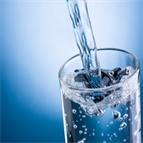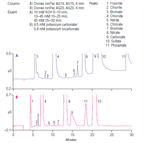Find methods for your needs
Refine by Feature
Displaying 1-5 of 12 results for Tag: Disinfection Byproduct
AN72209: Determination of Trace Concentrations of Oxyhalides and Bromide in Municipal and Bottled Waters
Instrument Type: ICTo demonstrate that oxyhalides and bromide can be successfully determined at concentrations required for regulatory standards and guidelines using a Thermo Scientific™ Dionex™ ion chromatography system equipped with a Thermo Scientific™ Dionex™ IonPac™ AS23-4μm column,Thermo Scientific™ Dionex™ CRD 300 Carbonate Removal Device, and a Thermo Scientific™ Dionex™ AERS™ 500 Carbonate Anion Electrolytically Regenerated Suppressor.
AU203: Determination of Trace Concentrations of Oxyhalides and Bromide in Municipal and Bottled Waters Using a Compact Ion Chromatography System
Instrument Type: ICTo demonstrate that oxyhalides and bromide can be run successfully using a Thermo Scientific™ Dionex™ Integrion™ HPIC™ system combined with a Thermo Scientific™ Dionex™ IonPac™ AS19-4μm column, featuring smaller resin particles, to achieve faster analysis without compromising data quality compared to using the Dionex IonPac AS19 column as in Application Note 167.
EPA Method 557 - Analysis of Haloacetic Acids, Dalapon, and Bromate in Drinking Water by IC-MS/MS
Instrument Type: ICMSHaloacetic acids (HAAs) are formed as disinfection byproducts when water is chlorinated to kill bacteria. Chlorine reacts with naturally occurring organic and inorganic matter in the water, such as decaying vegetation, to produce disinfection by-products (DBPs) that include HAAs. Of the nine species of HAAs, five are currently regulated by the U.S. Environmental Protection Agency (EPA). We demonstrate a simple and sensitive IC-MS/MS method for analyzing haloacetic acids, the pesticide dalapon, and bromate in water using EPA Method 557.
AU154: Determination of Bromate in Drinking and Mineral Water by Isocratic Ion Chromatography with a Hydroxide Eluent
Instrument Type: ICOzone is a powerful drinking water disinfectant that is effective in treating chlorine resistant organisms. Ozonation is an effective disinfection process that is used worldwide, but will produce bromate if the source water contains bromide. Bromate is a potential human carcinogen and its concentration in drinking water is regulated in many countries. This application update shows that bromate, chlorate, and chlorite can be determined with an isocratic hydroxide eluent to easily meet current bromate regulations.
AN184: Determination of Trace Concentrations of Chlorite, Bromate, and Chlorate in Bottled Natural Mineral Waters.(Method A)
Instrument Type: ICIn this application note, we compare the Dionex IonPac AS19 using an electrolytically generated hydroxide eluent to the AS23 column using an electrolytically generated carbonate/bicarbonate eluent for the determination of chlorite, bromate, and chlorate in natural mineral waters. We compare the linearity, method detection limits, precisions, and recovery for three mineral waters obtained from three European countries to determine whether these columns have the sensitivity required to meet current EPA and EU requirements. This record describes the IonPac AS19 method.





